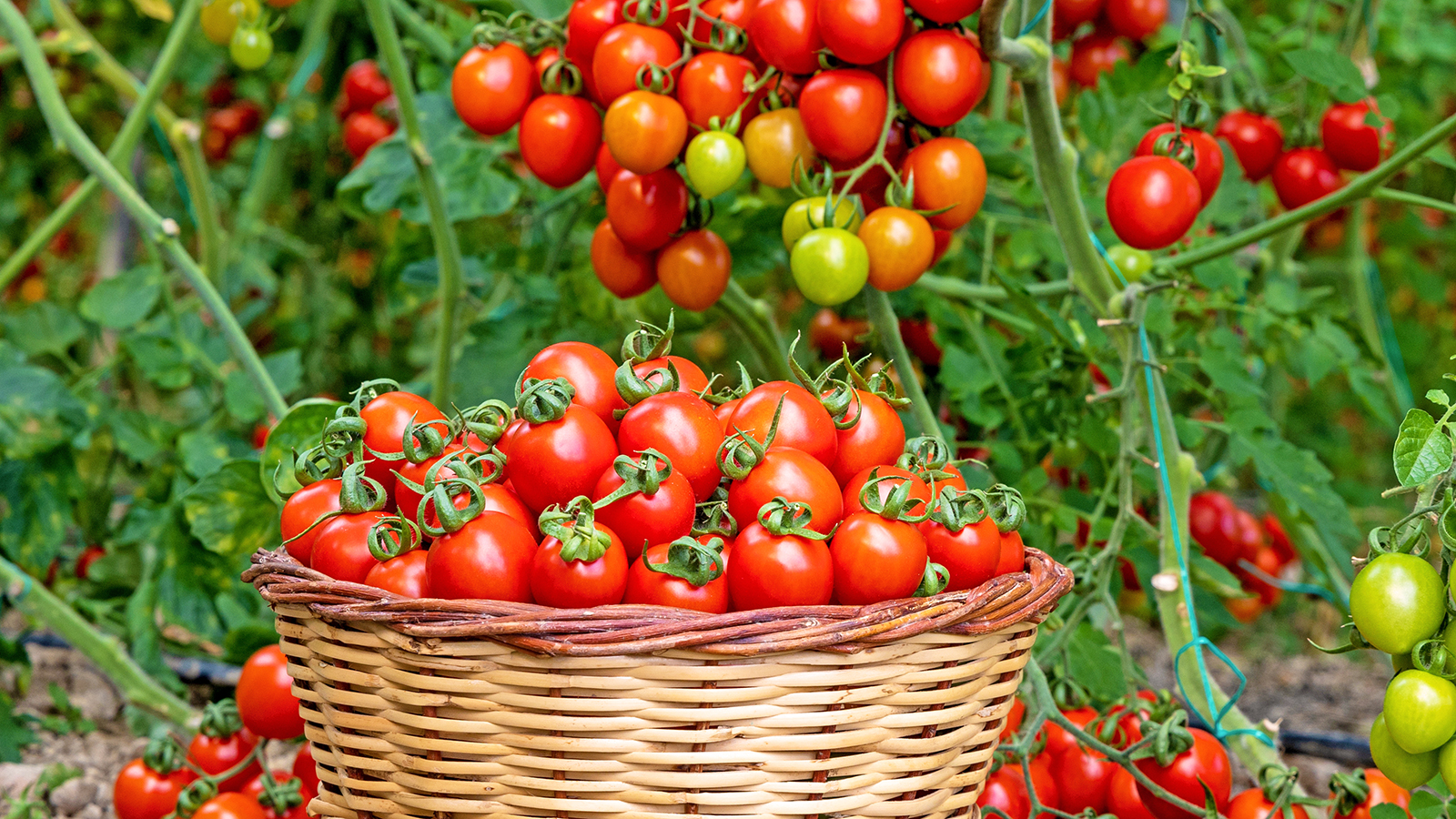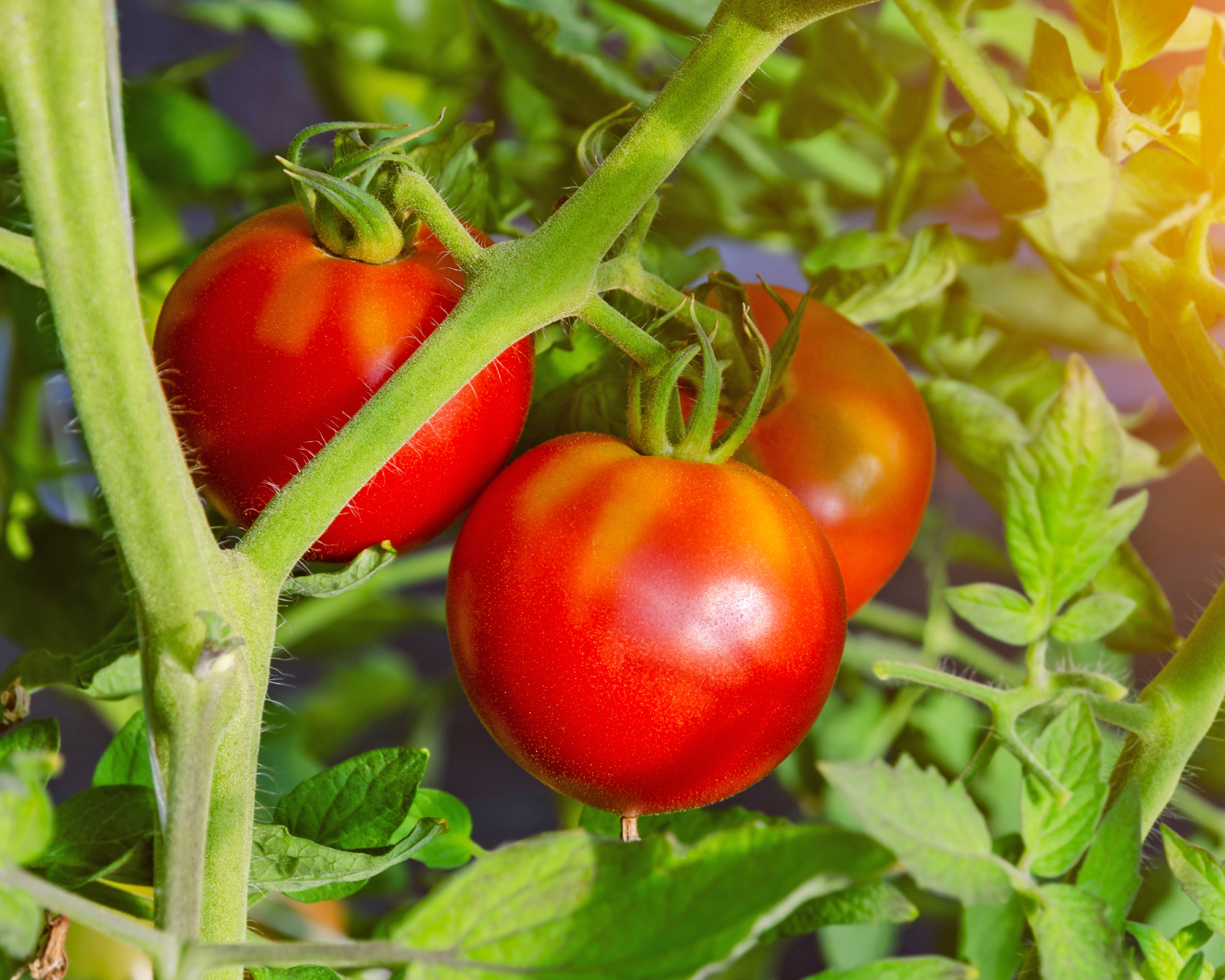How To Increase Tomato Yields: 7 Expert Tricks For A Bumper Harvest
Turn your garden into a tomato-producing powerhouse with these essential tips for growing a healthy, bountiful crop.


Tomatoes are a staple in the home vegetable plot, valued for their versatility and flavor. However, achieving bountiful tomato yields can prove challenging for even the most experienced gardeners.
Basic factors such as soil health, pest control, and regular watering all play crucial roles in the productivity of tomato plants – indeed they are vital components when starting a vegetable garden. But if you want to take your crops to the next level, our proven tomato-growing secrets will help you become an expert. As well as increasing yields, many of these methods will help to make tomato plants grow faster.
Whether you’re a novice gardener or a seasoned pro, these strategies will help you get the most out of your tomato plants, ensuring a summer filled with delicious, homegrown tomatoes.
1. Choose Top-Performing Varieties

Select tomato varieties known for their productivity. High-yielding tomatoes are bred to produce abundant fruit, making them ideal for maximizing your home harvest.
However, if you can also combine these properties with strong disease resistance, then you are on to a winner. Disease-resistant varieties will minimize the risk of losing crops to common tomato diseases.
Our pick of high-yielding, disease-resistant tomatoes will give you the best chance of growing a bountiful, healthy harvest – some of them are also among the easiest tomatoes to grow. Several of these varieties and more can be found at Burpee Seeds.
- Celebrity A determinate hybrid tomato variety with medium to large fruits and a reliably high yield.
- Better Boy An indeterminate hybrid known for large, flavorful fruits and very high yields.
- Juliet A grape tomato variety producing small, sweet fruits.
- Big Beef An indeterminate hybrid producing high yields of large beefsteak-type tomatoes.
- Mountain Magic High yields of small, round, sweet fruits.
- Iron Lady A hybrid tomato known for high yields of robust disease-resistant fruits in small to medium sizes.
2. Use Smarter Supports

Supporting tomato plants through staking or trellis is key to improving yields – as well as maximizing the use of space. Keeping the plants upright and off the ground ensures better light distribution to nurture growth and improves air circulation around the plant, reducing the risk of fungal diseases like blight and powdery mildew. It also makes it easier to train plants and remove excessive growth.
Sign up for the Gardening Know How newsletter today and receive a free copy of our e-book "How to Grow Delicious Tomatoes".
There are many vegetable trellis ideas that will enable you to train your tomato plants. However, the Florida weave method is an easy, affordable support method that can boost crop yields.
The method involves using stakes and twine to support tomato plants as they grow. Simply insert sturdy stakes into the ground at the ends of each row and between every two or three plants. Secure twine to the first stake, and weave it in and out of the tomato plants, wrapping it around each stake as you go. As the plants grow, add additional layers of twine every 6-8 inches (15-20cm) and weave the plants through, like a basket weave.
This makes for a strong support structure that can handle heavy branches and creates a gentle curvature to the vine, enabling the plant to grow more fruit. It also enables easier access for monitoring and harvesting fruits.
3. Try Trench Planting

Trench planting tomatoes is a method of deep-planting seedlings horizontally rather than vertically. It sounds unusual, but it can significantly improve yields by promoting stronger root systems and healthier plants.
By laying the seedling horizontally, more of the stem is buried, allowing it to develop roots along its entire length. This results in a more extensive and robust root system that can absorb more nutrients and water from the soil. The roots also provide better anchorage for the plant, reducing the risk of it being uprooted by wind or heavy fruit loads.
Not only does the method nurture higher yields, but it often extends the productive period of the plant, yielding more fruit per plant overall.
To trench plant tomatoes, choose seedlings with a good root system. Dig a shallow trench about 4-6 inches (10-15cm) deep and long enough to accommodate the stem of the seedling. Pinch off the lower leaves of the seedling, and lay it horizontally in the trench, with the top cluster of leaves above the soil line. Fill the trench with soil, covering the stem and leaving the top cluster of leaves exposed. Water the newly planted seedling thoroughly to help it establish.
Add stakes at the time of planting to minimize the risk of damage.
4. Tap To Pollinate

Tomatoes are self-pollinating plants, meaning flowers are equipped with both male and female parts. They rely on wind and pollinating insects to transfer the pollen from the stamens to the carpel. Where air movement and insect numbers are low, hand-pollinating tomatoes is the secret to increasing crop yields.
Methods include using a cotton swab to transfer pollen manually, shaking plants to distribute the pollen, and even vibrating vines with electric toothbrushes. However, tapping plants is a quick and foolproof method.
Start tapping as soon as flowers begin to bloom, doing it once or twice a day. Gently tap the plant’s main stem, starting at the bottom and working your way up to the top.
Midday is the best time to pollinate, especially on warm, sunny days with low humidity.
Tapping tomatoes takes just a few minutes out of your day and should result in a more abundant, healthier harvest.
5. Prune Out Excess Growth

Pruning and pinching out suckers on tomatoes are vital techniques that can significantly increase crop yields by directing the plant’s energy into producing fruit rather than excessive foliage.
By cutting back unnecessary leaves, more sunlight can also reach the remaining leaves and fruits, promoting photosynthesis and healthier growth. With more energy focused on the existing fruit, tomatoes can grow larger and the plant can produce a more abundant crop overall.
Pruning also enables fruits to ripen more evenly and improves air circulation to reduce the risk of fungal diseases.
As plants grow, remove the lower leaves close to the ground to prevent soil-borne diseases from splashing onto them. Regularly pinch off suckers that grow between the main stem and leaf branches. Use your fingers to remove the suckers when they are about 2-4 inches (5-10cm) long.
Toward the end of the growing season, you can cut off the top of the plant to stop upward growth. This forces the plant to focus on ripening the existing fruit.
Indeterminate varieties benefit most from regular pruning and pinching because they continually produce new growth and fruit. Pruning helps manage their size and encourages consistent fruiting.
Determinate varieties generally have a set growth and fruiting period. Pruning for these plants should be minimal, focusing on removing lower leaves and any suckers below the first flower cluster to promote a healthy structure.
6. Companion Plant With Good Neighbors

Companion planting tomatoes is one of the most beneficial things you can do to boost growth and improve crop yields.
The method involves strategically positioning tomatoes to grow alongside plants with helpful properties. This may be repelling pests, attracting pollinators, improving flavor, adding nutrients to the soil, or helping plants to retain moisture. Valuable companion plants for tomatoes include:
- Marigolds keep nematodes from attacking tomato plants, while their odor confuses other insects, such as whiteflies.
- Basil deters aphids and tomato hornworms. It is also believed to improve the vigor of tomatoes, as well as their flavor.
- Thyme and oregano attract pollinators, boosting fruit production.
- Legumes, such as beans, fix nitrogen in the soil, enhancing nutrient availability for tomatoes.
- Borage attracts pollinators and can return nutrients to the soil, improving its overall fertility.
- Chives, onion, and garlic are all effective at warding off pests.
- Leafy greens such as lettuce can provide ground cover, reducing soil temperature and retaining moisture, which is beneficial for tomato root health.
As well as good companion plants there are bad neighbors too:
- Brassicas, such as broccoli and cabbage compete for nutrients and stunt growth.
- Corn attracts tomato fruit worms.
- Kohlrabi and fennel will both stunt the growth of tomatoes.
- Potatoes should not be planted with tomatoes as they are susceptible to the same diseases.
7. Fertilize With The Right Nutrients

Tomatoes are heavy feeders and need regular fertilizing with the right balance of nutrients in order to provide a heavy crop.
There are many excellent tomato fertilizers on the market, like these options from Amazon; however, homemade tomato fertilizer can be just as effective and is a true organic solution.
The key nutrients needed by all plants are nitrogen, for green, leafy growth; phosphorus, for healthy root development; and potassium for fruiting. However, tomatoes also need calcium, for healthy fruit; magnesium and iron, for chlorophyll production; and other trace elements.
Too much of a good thing can be problematic, though. For example, overfeeding with nitrogen can result in all green and no fruit, an excess of phosphorus results in stunted growth, and too much potassium can impart an acidic flavor to the tomatoes.
Early in the planting season, use nitrogen-rich fertilizers, then switch to potassium and phosphorus-rich fertilizers before flowering.
Fertilize tomatoes at the time of planting and then every few weeks until plants are finished.

Melanie is an experienced gardener and has worked in homes and gardens media for over 20 years. She previously served as Editor on Period Living magazine, and worked for Homes & Gardens, Gardening Etc, Real Homes, and Homebuilding & Renovating. Melanie has spent the last few years transforming her own garden, which is constantly evolving as a work in progress. She is also a passionate organic home grower, having experimented with almost every type of vegetable at some point. In her home, Melanie tends to an extensive houseplant collection and is particularly fond of orchids.
